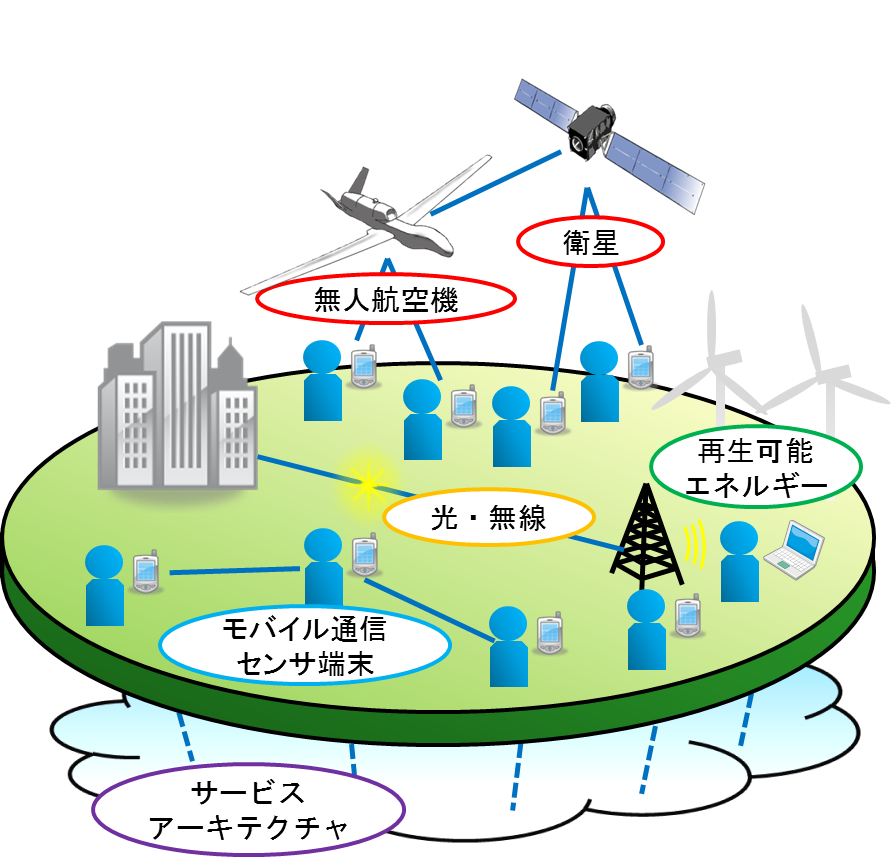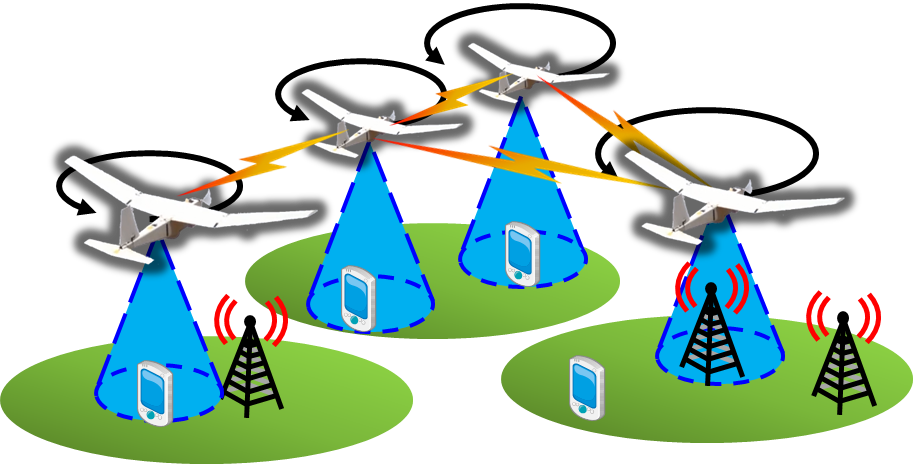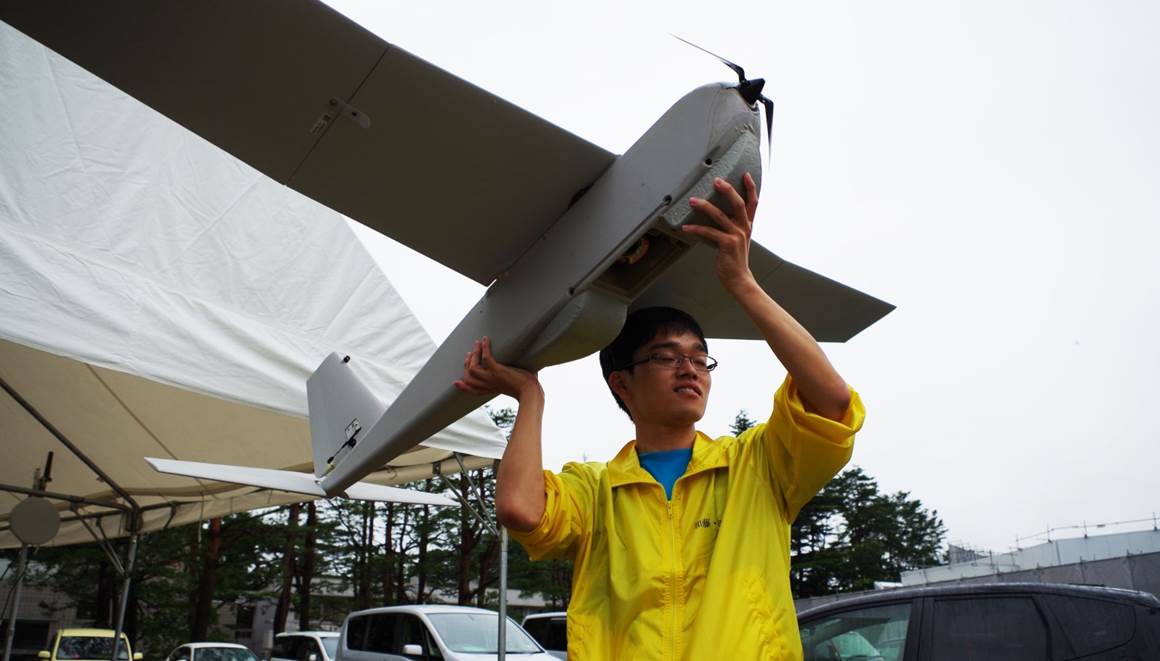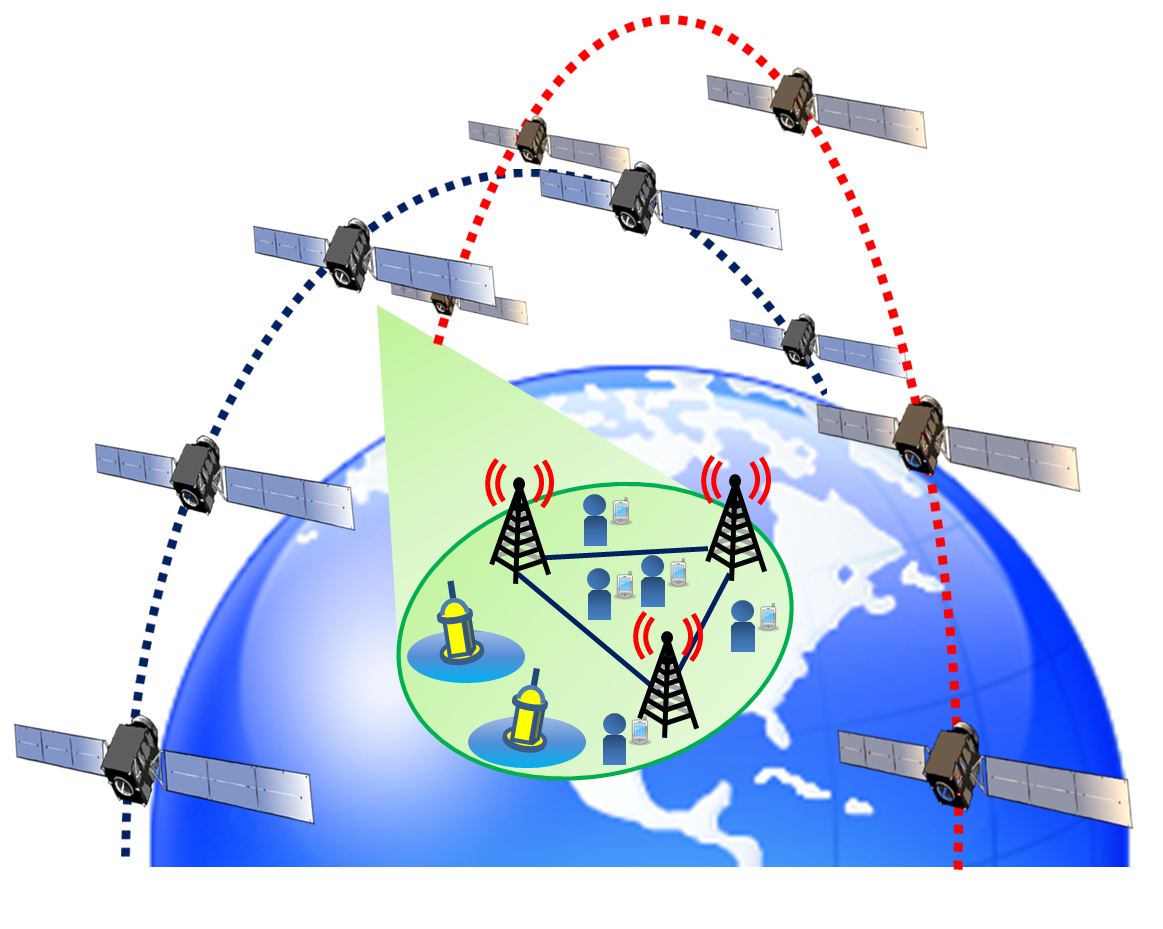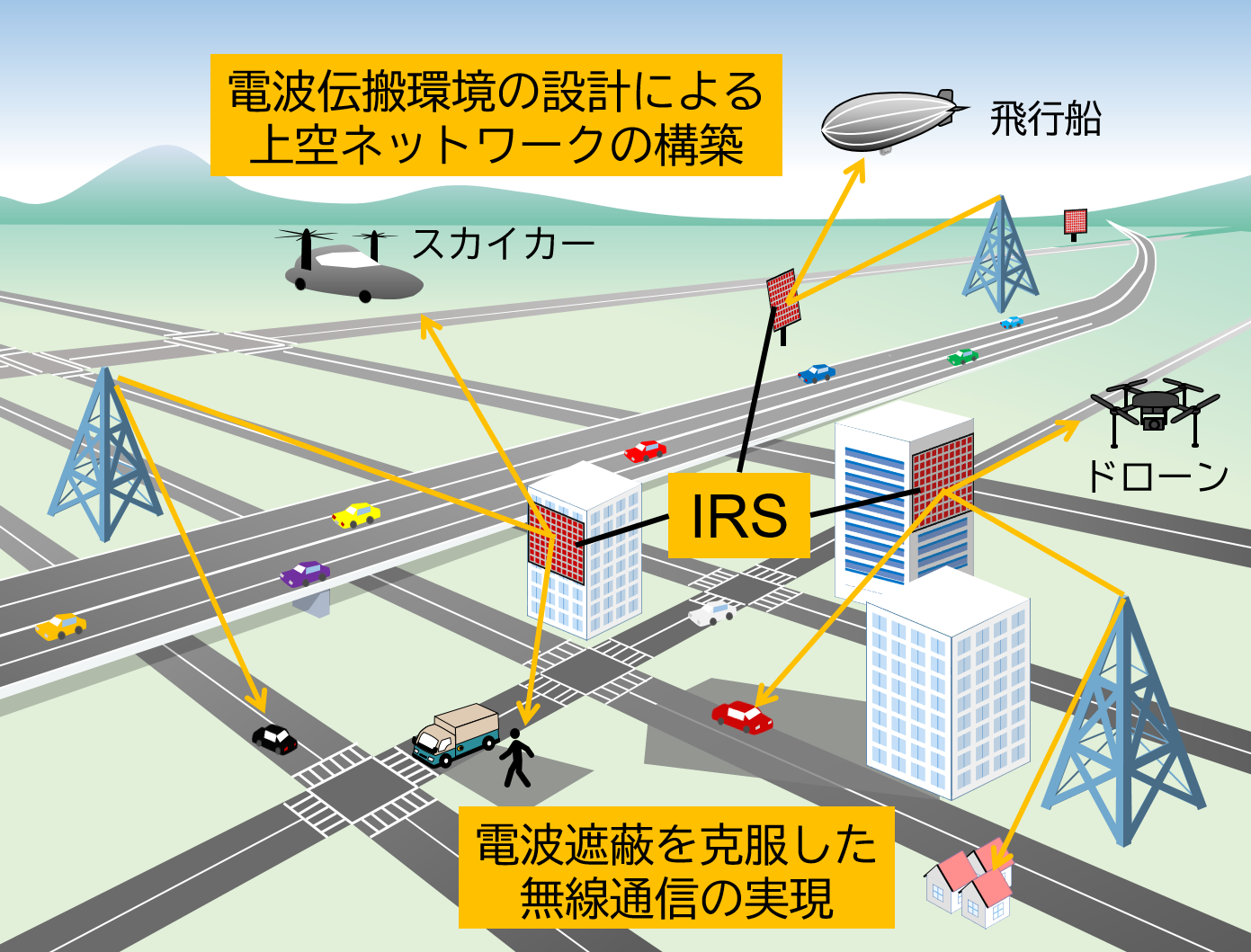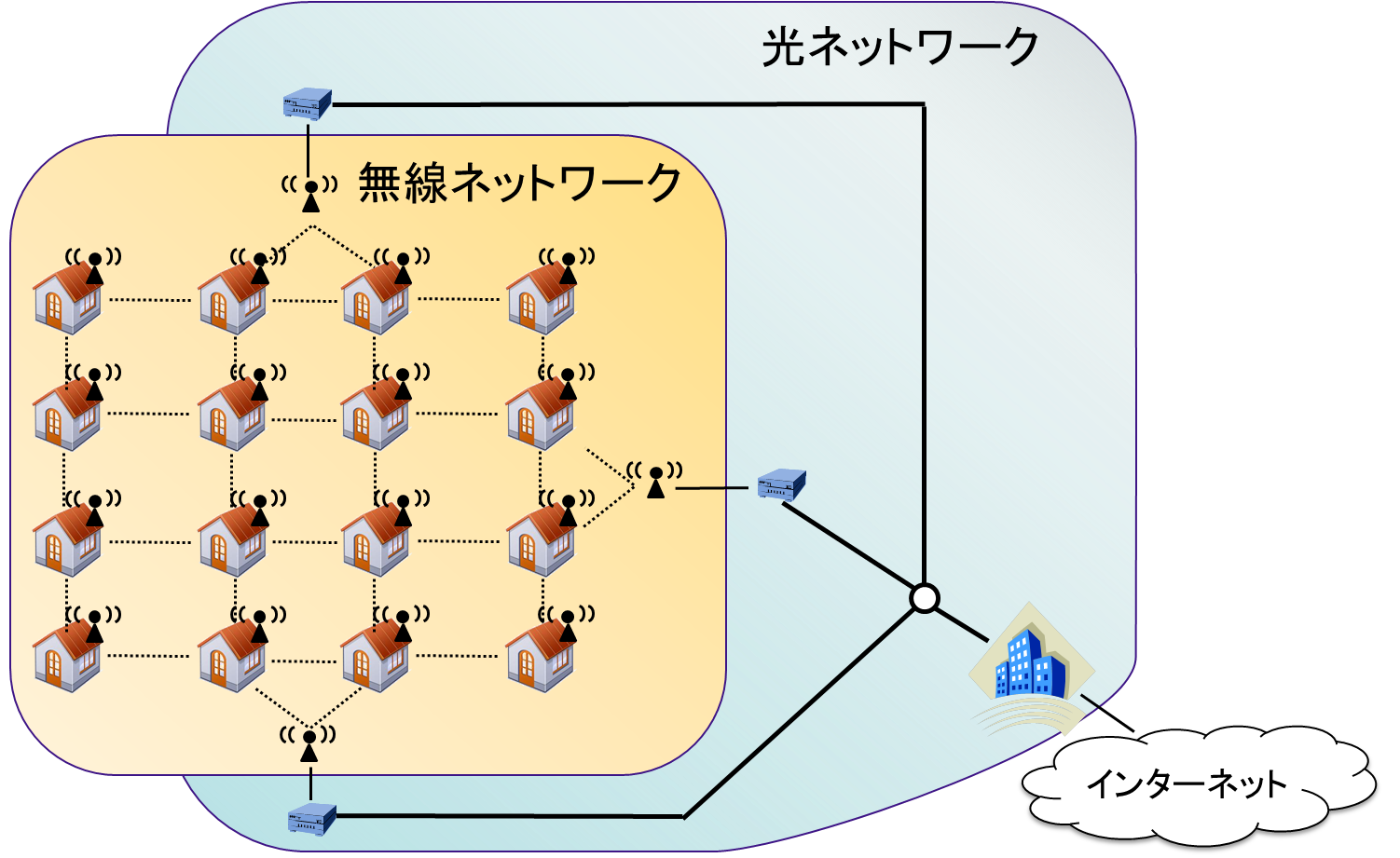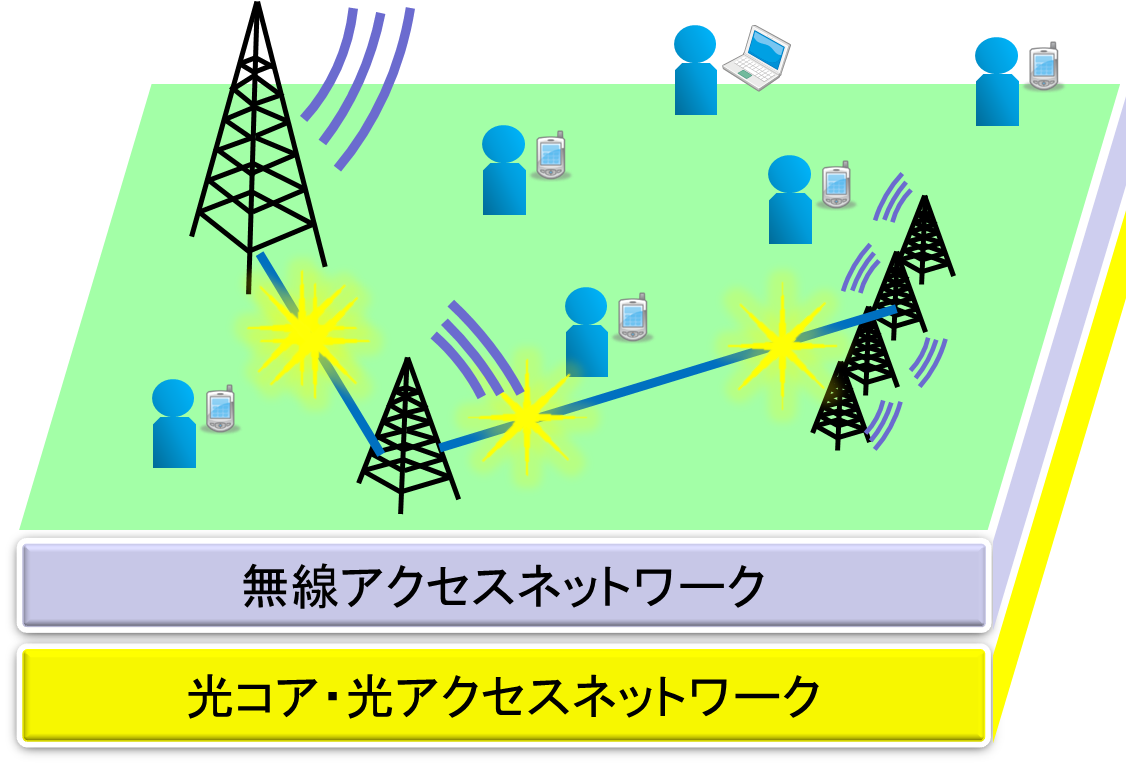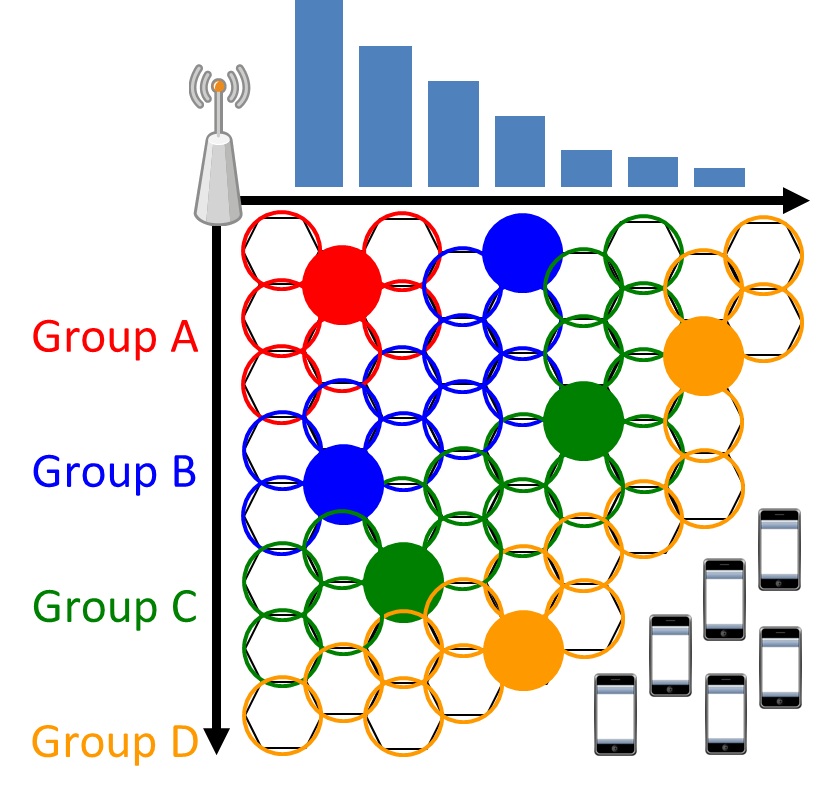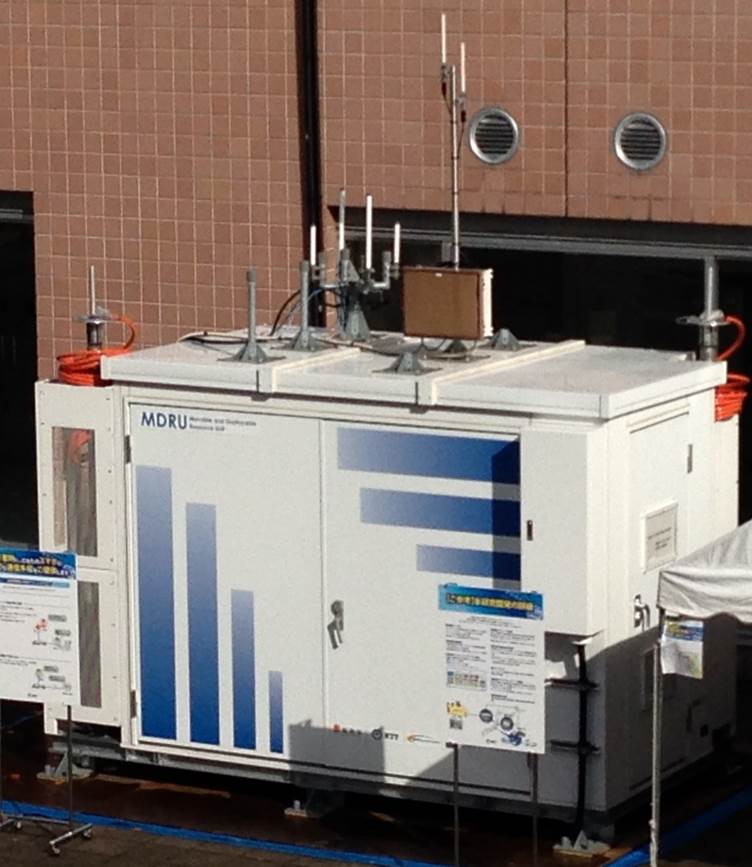Communication devices and their networks have become very popular in our daily life. The communication technology is now used in various devices, from mobile phones, smartphones, tablets, and wearable computers to household electric equipment such as game machines, microwave ovens, and refrigerators, or even unmanned aerial vehicles and environmental observation devices. Furthermore, networks which connect communication devices become more diverse. For example, we have optical fiber networks, wireless access networks, cellular networks, satellite networks, and vehicular networks. In addition, we also have ad hoc networks, sensor networks, and so forth. However, are we efficiently utilizing those communication networks? Can we further improve the abilities of such networks? In this laboratory, we are not only focusing on next generation networks and building our research based on theoretical design of networks and protocols in order to optimize the communication networks, but also emphasizing on professional human resources development. The main keywords of our research themes are as follows.
Research Areas
Unmanned Aerial Vehicular (UAV) networks
Recently, Unmanned Aerial Vehicles (UAVs) have attracted attention for various applications such as drone delivery, crop monitoring, constructing wireless mesh networks in disaster areas, communication assistance in Intelligent Transport Systems (ITSs) and so forth. For these applications, wireless communications and network technologies are essential to efficiently transmit data over Air-to-Air (A2A) and Air-to-Ground (A2G) channels.
In our laboratory, we aim to design a high-capacity, low-latency UAV-aided communication network. For this purpose, we analyze the effect of UAV mobility, consider the efficiency of multiple access methods and so forth. Our research regarding this topic includes the following:
- A study on the efficient frequency resource allocation scheme in UAS.
- UAV-aided wireless mesh network construction in disaster areas.
- Optimal UAV control for maximum number of receiver vehicles in Intelligent Transport Systems.
- A study on the provision of computing resources using UAVs and edge computing.
Satellite networks
In the 5G era, where further development of IoT is expected, communication demand is predicted to expand not only to residential areas with high user density, but also to rural areas and air/sea areas with low user density. It will be difficult to respond to these communication demands that are expected to expand only with the currently existing terrestrial networks. Large-scale satellite networks, such as low-orbit satellite constellations, that expand the coverage of the entire Earth are an option for supplementing terrestrial networks that has been attracting attention. However, various issues, such as mobility and network usage cost, must be solved in order to achieve the main goals of this system: efficiently integrate the large-scale satellite network and the terrestrial network, improve the system utilization efficiency, reduce the frequency interference inside the own system, optimize frequency sharing between the systems, reduce delay time peculiar to the satellite network. In our laboratory, we are conducting research on the construction of mathematical models and network control by AI, aiming at the realization of an integrated network of terrestrial, air, and space in which satellite networks and terrestrial networks interact and cooperate. Examples of research projects are as follows.
- Research on frequency allocation that predicts communication environment fluctuations in 5G / Beyond 5G era satellite communications
- Research on transmission control to realize low-cost low-orbit satellite constellation
- Research on transmission control using AI in space-air-ground integrated networks
Intelligent Reflecting Surface-aided communication systems
The development of transmission technologies such as antennas and transmission access methods has dramatically improved the performance of wireless communications. For example, mobile communication systems go through significant advancements every few years, and the communication performance of the 5th generation of mobile communication system (5G), which started operation in Japan in 2020, is expected to be tens of times higher than 4G, which started in 2015. However, it is said that the growth of wireless communication technologies is gradually reaching its limits. One of the bottlenecks to this growth is the physical constraint that any obstacle between the base station and the communication terminal makes communication unstable. Even if the transmission technology becomes more advanced, if the radio waves are intercepted, communication will not be possible. In order to circumvent this bottleneck and cause a paradigm shift in wireless communication technologies, it is necessary to design a new wireless communication network system. The IRS is an electromagnetic wave reflector composed of a number of passive reflective elements. The reflective elements are composed of dynamically changeable metamaterials. By appropriately modifying the reflection characteristics of each element and designing an ideal radio wave propagation route, it is possible to bypass obstacles and provide communication services that are not affected by obstacles. In this research group, we are developing a basic theory and a new communication controlling algorithm to realize an IRS-aided communication system.
Our research in this topic includes:
- Efficient channel estimation and precoding
- IRS placement optimization
- Control method of inter-device communication using spatial information
- Resource allocation method for IRS communication systems
- Control protocols for IRS communication systems
- IRS-aided air-ground networks
Optical and wireless integrated networks
In order to achieve high-speed communication, the wireless and optical integrated networks are emerging as an exciting research area. In such networks, both wireless communication and optical communication, have entirely different inherent characteristics. The wireless network aims to enable ubiquitous communication while the optical network aims at enabling large-capacity communication. The realization of advanced cooperation and integration of both the wireless and optical networks is essential to achieve the highly anticipated ICT society of tomorrow. The structure to exploit the characteristics of wireless and optical communication systems in an integrated manner is an intricate process which deserves adequate research attention. In this vein, our research topics include:
- The advanced integration of wireless communication and optical communication
- The entire network optimization technology of the communication quality control and the energy consumption control
Resilient networks
Devastating natural disasters such as the Great East Japan Earthquake, which we experienced here in Sendai, are capable of disabling communication infrastructure for a prolonged period of time, while the demand for communication is bound to increase significantly due to safety confirmation of victims and efforts by disaster response organizations. To provide essential communication services until the recovery of infrastructure, the construction of networks by the mutual connection of communication devices is expected to be an effective technology to provide service without depending on infrastructure.
By utilizing disaster-resistant communication equipment and network virtualization, we aim to realize disaster resilient networks which can respond to ever-changing disaster environments.
Our research in this topic includes:
- Research on disaster resilient wireless mesh networks
- Implementation of disaster resilient networks as a cyber physical system
- Performance improvement of disaster resilient networks by network virtualization
Machine learning, Deep learning based network control
Recently, communication networks are witnessing a dramatic increase in network traffic due to the rapid development of communication devices and technologies. The existing network policies are not sophisticated enough to deal with the continually changing network conditions resulting from the explosive traffic growth. With its recent breakthroughs, deep learning can be a viable technique for network operators to configure and manage their network traffic control systems in a more intelligent manner. Other computer science research fields, including computer vision, speech recognition, robotics, autonomous vehicles, natural language processing, and so forth, have heavily invested and benefited from deep learning applications. On the other hand, the applications of deep learning in network traffic control systems are relatively recent and garnered rather little attention. Our laboratory has pioneered in this field by introducing deep learning aiming to build tomorrow’s intelligent network traffic control systems, with a particular emphasis on the following areas:
- Deep learning-based intelligent network traffic control
- Deep learning-based routing for wired/wireless backbone networks
- Removing routing protocols from future wireless networks
- Deep learning-based traffic engineering in SDNs and 5G networks
- Reinforcement learning-based power efficiency improvement for wireless networks
- Deep learning-based control for Space-Air-Ground integrated networks
